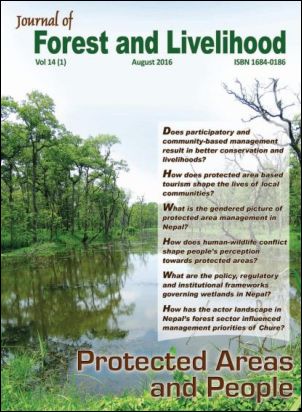Park–People Interaction and Public Perceptions towards Parsa Wildlife Reserve, Nepal
DOI:
https://doi.org/10.3126/jfl.v14i1.23161Keywords:
Attitude, buffer zone, Parsa Wildife Reserve, protected area, NepalAbstract
Protected areas (PAs) are established to conserve biodiversity and ecosystems. PAs also provide natural resources to local people that support their livelihoods. However, local people residing nearby PAs often face diverse costs that may influence their overall attitude towards PAs. This actually determines the degree of participation and support of local people in nature conservation. This paper assesses the attitude of local people towards PAs taking a case of Parsa Wildlife Reserve (PWR). The research methods employed were household survey followed by focus group discussions, key informant’s interview and participant observation. This study found that the local people in and around the PWR have negative attitude towards it. Only 34 per cent liked its presence whereas 58 per cent of the respondents were not happy to be included in the buffer zone. Reasons for disliking the reserve was mainly due to wildlife damage; restrictions in resource use; and arrest and prosecution by the park authorities. In contrast, reasons for liking the reserve were the opportunities for natural resource use, biodiversity conservation, and tourism/business. The paper concludes that by addressing the negative attitudes of local people helps the reserve authority to enhance long term sustainability of PWR.
Downloads
Downloads
Published
How to Cite
Issue
Section
License
CC-BY-NC: This license allows reusers to distribute, remix, adapt, and build upon the material in any medium or format for noncommercial purposes only, and only so long as attribution is given to the creator.





